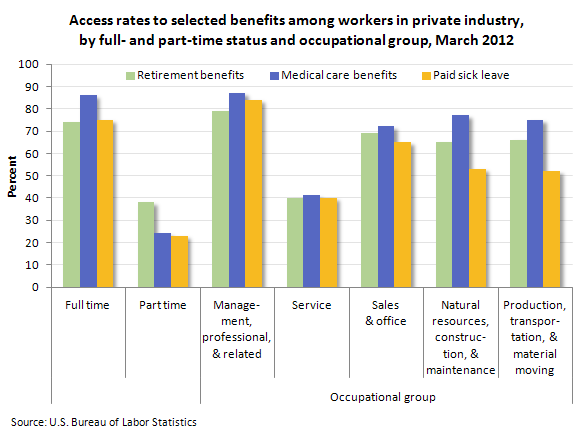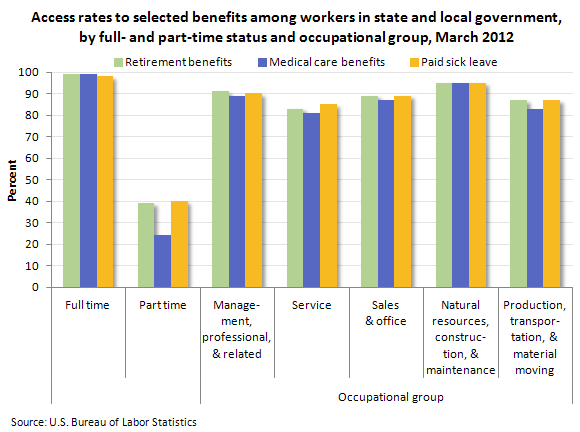July 26, 2012 (The Editor’s Desk is updated each business day.)
Employee benefits in private industry and state and local government, March 2012
In March 2012, among workers in private industry, medical care benefits were offered to 41 percent of workers in service occupations and 87 percent of workers in management, professional, and related occupations.

[Chart data]
In private industry, medical care benefits were offered to 24 percent of part-time workers and 86 percent of full-time workers. Twenty-three percent of part-time workers had access to paid sick leave, compared with 75 percent of full-time workers.
For workers in service occupations, access rates were higher in state and local government than in private industry. For example, 83 percent of state and local government workers were offered retirement benefits, compared with 40 percent of private industry workers.

[Chart data]
Among workers in state and local government, retirement and medical benefits were offered to 99 percent of full-time workers and paid sick leave to 98 percent.
These data are from the National Compensation Survey – Benefits program. To learn more, see "Employee Benefits in the United States — March 2012" (HTML) (PDF), news release USDL-12-1380. Employees are considered to have access to a benefit plan if it is available for their use.
Related TED articles
Employee medical, retirement, and leave benefits, March 2012
Benefits |
Health care |
Retirement
Of interest
Spotlight on Statistics: National Hispanic Heritage Month
In this Spotlight, we take a look at the Hispanic labor force—including labor force participation, employment and unemployment, educational attainment, geographic location, country of birth, earnings, consumer expenditures, time use, workplace injuries, and employment projections.
Read more »

